解説 / Description
タイガープレコは、南米オリノコ川水系に生息する、最大10cmほどの小型プレコです。その最大の特徴は、主食として「木材」を必要とする「木材食性(Xylivore)」であることです。水槽内でも流木をかじることで繊維質を摂取し、消化を助けています。このため、飼育には流木の設置が不可欠となります。 国際的には美しい縞模様から「クラウンプレコ(道化師のプレコ)」と呼ばれ親しまれていますが、日本では「タイガープレコ」という名前で広く流通しています。ただし、この名称は縞模様の小型プレコの総称として使われることもあり、肉食性のキングタイガープレコなど、生態が全く異なる種と混同されることもあるため注意が必要です。 性格は非常に臆病で夜行性であり、日中は流木の陰に隠れてほとんど姿を見せませんが、そのユニークな生態と小型で管理しやすいサイズから、古くから愛好家に親しまれている入門種です。 The Clown Pleco (*Panaqolus maccus*) is a small catfish from the Orinoco River basin in South America, reaching a maximum size of about 10 cm. Its most defining characteristic is its xylivorous (wood-eating) diet, meaning it requires wood as its primary food source. In the aquarium, it gnaws on driftwood to consume fiber, which aids digestion. Therefore, providing driftwood is essential for its care. Internationally, it is known as the “Clown Pleco” for its attractive stripes, but in Japan, it is widely distributed as the “Tiger Pleco.” However, this name is often used as a catch-all for small, striped plecos, leading to potential confusion with species that have entirely different diets, such as the carnivorous King Tiger Pleco. It is a very shy, nocturnal fish that spends most of the day hidden in driftwood. Despite its reclusive nature, its unique ecology and manageable size have made it a long-time favorite and an excellent introductory species for aquarists.
基本情報 / Basic Information
| 学名 / Scientific Name | Panaqolus maccus (Schaefer & D. J. Stewart, 1993) |
|---|---|
| 通称 / Common Name | タイガープレコ、コロンビアタイガー (L104, L162, LDA22)Tiger Pleco (in Japan), Clown Pleco, Clown Panaque |
| 分類 / Family | ナマズ目 ロリカリア科 パナコラス属Order: Siluriformes, Family: Loricariidae, Genus: Panaqolus |
| 英名 / English Name | Clown Pleco |
| 分布 / Distribution | 南米:ベネズエラのアプレ川・カロニ川水系、コロンビアのメタ川水系(オリノコ川流域)South America: Apuré and Caroní River systems (Venezuela), Meta River system (Colombia) within the Orinoco basin. |
| 最大体長 / Max Size | 標準体長8.8 cm。水槽内では通常7.5~10cm程度。Standard Length 8.8 cm (approx. 3.5 in). Typically 7.5–10 cm (3-4 in) in aquariums. |
| 寿命 / Lifespan | 10年~12年程度Approx. 10–12 years |
飼育環境 / Aquarium Environment
| 水槽サイズ / Tank Size | 単独飼育で最低60cm規格水槽(約60L)以上を推奨。複数飼育や混泳の場合は、十分な縄張りを確保するため150L(90cm規格水槽)以上が望ましいです。Minimum 60cm standard tank (approx. 60L / 15-20 gal) for a single specimen. Over 150L (90cm tank / 40 gal) is recommended for multiple individuals or community tanks to ensure sufficient territory. |
|---|---|
| 水温 / Temperature | 24~28℃(最適範囲) |
| 水質 / Water Quality | 弱酸性~中性 (pH 6.5~7.5)、軟水~中程度の硬水 (GH 5~10 dGH)。安定した水質を好みます。Slightly acidic to neutral (pH 6.5–7.5), soft to moderately hard water (GH 5–10 dGH). Prefers stable water conditions. |
| レイアウト / Layout | 流木(必須): 主食であり隠れ家でもあるため、設置は必須です。柔らかい材質のものを複数、複雑に組んで隠れ家を多く作ります。 底床: デリケートな口ひげを傷つけないよう、角のない細かい砂(サンド)や細粒の砂利が理想です。 照明: 夜行性のため強い照明を嫌います。浮草や流木の配置で、魚が隠れられる薄暗いエリアを多く作ることが重要です。Driftwood (Essential): Mandatory as their primary food source and shelter. Use multiple, softer pieces arranged complexly to create many hiding spots. Substrate: Fine, smooth sand or small-grained gravel is ideal to protect their delicate barbels. Lighting: Subdued lighting is preferred as they are nocturnal. Create dim areas using floating plants or driftwood arrangements. |
| 注意点 / Precautions | 強力なろ過: 木材食性のため消化効率が低く、糞の量が非常に多い(生物学的負荷が高い)魚です。この高い負荷に対応するため、ろ材容量の大きい外部式フィルターなど、強力な生物ろ過システムが不可欠です。 溶存酸素: 原産地が河川であるため、溶存酸素が豊富な水を好みます。フィルターによる水面の撹拌や、エアーストーンの使用が有効です。Strong Filtration: As a wood-eater, it has low digestive efficiency and produces a very large amount of waste (high bioload). A powerful biological filtration system, such as a canister filter with large media capacity, is essential to handle this load. Dissolved Oxygen: Prefers well-oxygenated water, reflecting its riverine origin. Airstones or surface agitation from the filter outlet are effective. |
餌と給餌 / Feeding
| 餌の種類 / Diet | 主食: 流木(必須)。流木そのものの繊維質と、表面に発生する微生物膜(バイオフィルム)を摂取します。 補助食(植物質): 高品質なプレコ専用のタブレットフードや顆粒飼料。茹でたホウレンソウ、ズッキーニ、キュウリなども優れた補助食となります。 補助食(動物質): 基本は植物食ですが、時折、冷凍アカムシやブラインシュリンプを与えることで栄養バランスが向上します。これは繁殖前のコンディション調整にも有効です。Primary Diet: Driftwood (Essential). Consumes the wood fiber itself and the biofilm (microorganisms) growing on its surface. Supplemental (Plant-based): High-quality pleco-specific tablets or granules. Blanched spinach, zucchini, and cucumber also make excellent supplemental foods. Supplemental (Animal-based): Primarily herbivorous, but occasional feedings of frozen bloodworms or brine shrimp will improve nutritional balance. This is also effective for conditioning breeders. |
|---|---|
| 給餌のポイント / Feeding Tips | 夜行性であるため、1日に1回、消灯直前や夜間に給餌するのが最も効果的です。これにより、他の魚との競合を避け、落ち着いて食事をすることができます。 しばしば「お掃除役」として販売されますが、特に成魚はコケ(藻類)を主食とはしません。「コケ取り生体」として導入するのは誤りです。As they are nocturnal, feeding once daily at night or just before lights out is most effective. This allows them to eat peacefully without competition from other fish. Although often sold as a “cleaner fish,” they should not be relied upon as algae eaters, especially as adults. Acquiring them for algae control is a mistake. |
性格と混泳 / Temperament and Tank Mates
| 性格 / Temperament | 非常に臆病で典型的な夜行性です。日中のほとんどの時間は流木やシェルターの奥深くに隠れて過ごし、姿を見せることは滅多にありません。同種や体型が似た他の底物(コリドラスなど)に対しては縄張り意識を示すことがありますが、相手に深刻なダメージを与えるような激しい争いに発展することは稀です。Extremely shy and typically nocturnal. It spends most of the day hidden deep within driftwood or shelters and is rarely seen. It can be territorial towards conspecifics or other similar-shaped bottom-dwellers (like Corydoras), but serious fights causing significant damage are rare. |
|---|---|
| 混泳の相性 / Compatibility | 適した相手: 小型で温和な性質のため、テトラ、ラスボラ、ドワーフグラミーなど、中層~上層を泳ぐ小型魚との混泳に適しています。 避けるべき相手: 大型で攻撃的な魚、特にシクリッド類は、本種をいじめたり捕食したりする可能性があるため避けるべきです。 注意点: ディスカスやエンゼルフィッシュのような、体が大きく動きが緩慢な魚の体表を舐め、粘膜を傷つける事例が報告されています。これは多くの場合、プレコの飢餓状態(特に動物性タンパク質の不足)が原因の日和見的な摂食行動と考えられます。流木だけでなく動物質を含むバランスの取れた餌を十分に与えることが、最善の予防策となります。Suitable Tank Mates: Due to its small, peaceful nature, it is well-suited for community tanks with small fish that inhabit the mid-to-upper levels, such as tetras, rasboras, and dwarf gouramis. Unsuitable Tank Mates: Avoid large, aggressive fish, especially cichlids, which may bully or predate on them. Precautions: There are reports of them “slime-sucking” the body mucus of large, slow-moving fish like Discus or Angelfish. This is often considered opportunistic feeding behavior caused by starvation (especially a lack of animal protein). Providing a sufficient, balanced diet, including animal matter and not just driftwood, is the best prevention. |
病気と対策 / Diseases and Prevention
| かかりやすい病気 / Common Diseases | 市場に流通する個体の多くは野生採集個体(ワイルド個体)であるため、導入時の寄生虫(白点病など)や細菌感染症に注意が必要です。また、輸送状態や環境に馴染めないことによる「痩せ(腹部が凹む)」にも注意しましょう。As many individuals in the trade are wild-caught, precautions should be taken against parasites (like Ich/White Spot) and bacterial infections upon introduction. Also, watch for emaciation (“sunken belly”), which can result from transport stress or failure to acclimate. |
|---|---|
| 対策と予防 / Prevention | 購入時には腹部が痩せて凹んでいないか、元気に反応するかを確認します。導入後は本水槽に入れる前に、最低でも2週間程度のトリートメント(検疫)期間を設けることを強く推奨します。 糞の量が多いため、強力なろ過と定期的な水換え(週に一度、20~30%程度)によって清浄な水質を維持することが、病気の最大の予防策となります。When purchasing, check for a full (not sunken) belly and active responses. It is highly recommended to quarantine new arrivals for at least 2 weeks before introducing them to the main tank. Due to their high waste output, maintaining pristine water quality through strong filtration and regular water changes (20-30% weekly) is the best preventative measure against disease. |
増やし方(繁殖) / Breeding
| 繁殖形態 / Reproduction | 洞窟産卵型(ケーブスポウナー)です。雌が産卵筒などの洞窟に卵を産み付け、雄がその場で卵を守り、胸鰭で新鮮な水を送り続けます。They are cave spawners. The female lays eggs inside a cave (like a breeding tube), and the male guards them, fanning the eggs with his pectoral fins to keep them oxygenated. |
|---|---|
| 繁殖のポイント / Breeding Tips | 雌雄判別: 性的成熟(生後約8ヶ月)した雄は、頭部、胸鰭の縁、背中に沿ってオドンモード(歯のような突起物)が顕著に発達し、「毛深い」印象になります。雌はオドンモードが発達せず、抱卵すると体型が丸みを帯びます。 産卵誘発: 自然界の「乾季から雨季への移行」を再現します。高めの水温(27~29℃)で安定させた後、元の水温より2~3℃低い、軟水化した水(RO水など)で大規模な水換え(50%以上)を数回行い、水温低下と水質変化で刺激します。 産卵筒: 魚がギリギリ入れる程度の狭い入り口を持つ、セラミック製産卵筒やPVCパイプを用意します。 稚魚の育成: 繁殖プロセスで最も難しいとされます。孵化後、ヨークサック(お腹の栄養)を吸収し終えたら専用の育成容器に移します。最も重要な初期飼料は、親水槽で長期間使用された流木片の表面に付着した「バイオフィルム」です。これに加えて、細かくすり潰したプレコ用タブレットや茹でたホウレンソウを与えます。Sexing: Sexually mature (around 8 months) males develop prominent odontodes (tooth-like projections) on the head, pectoral fin edges, and along the back, giving a “hairy” appearance. Females lack these prominent odontodes and become rounder when gravid (carrying eggs). Spawning Trigger: Simulate the transition from the dry to the rainy season. After a period of stable, warmer water (27-29°C), perform several large (50%+) water changes with cooler (2-3°C lower), softer water (e.g., RO water) to trigger spawning. Breeding Caves: Provide caves with a tight entrance where the fish can just barely fit, such as ceramic tubes or PVC pipes. Fry Rearing: Considered the most challenging part. Once the fry have absorbed their yolk sacs, move them to a dedicated breeder box. The most critical first food is the “biofilm” on a small piece of “seasoned” driftwood from the parent tank. Supplement this with finely crushed pleco tablets and blanched spinach. |
雑学と豆知識 / Trivia and Fun Facts
| 雑学・豆知識 / Trivia & Fun Facts | タイガープレコを飼育する上で最も興味深いのは、その「名前」にまつわる物語かもしれません。日本では「タイガープレコ」として親しまれていますが、国際的な通称は「クラウンプレコ(Clown Pleco)」、つまり「道化師のプレコ」と呼ばれています。
なぜ日本では「タイガー」なのでしょうか。これは、日本のアクアリウム市場において「タイガー」という言葉が、縞模様を持つ小型プレコ全般を指す便利な”商業名”として機能しているためです。その結果、本種 (*P. maccus*) だけでなく、高価で人気の高いキングタイガープレコ (*Hypancistrus* sp.) やクイーンインペリアルタイガープレコ (*Peckoltia compta*) なども同じ「タイガー」の名で呼ばれることがあります。 ここに大きな落とし穴があります。本種は「木材食」ですが、キングタイガープレコは「肉食傾向の強い雑食」と、食性が全く異なるのです。もし名前の混同から飼育方法を間違えれば、長期飼育は困難になります。本種を迎える際は「タイガープレコ」という名前だけでなく、その学名 (*Panaqolus maccus*) や、L104, L162といった「Lナンバー」、そして何より「流木を食べる木材食のプレコ」であることを確認するのが最も重要です。 また、本種は産地によって縞模様に「地域変異」が見られます。ベネズエラ産の個体は直線的な縞(ストレートバー)を、コロンビアのオリノコ川本流に近い個体は波状の模様(ウェイビーパターン)を持つ傾向があるとされ、コレクションの対象としても奥深い魅力を持っています。Perhaps the most interesting story about the Clown Pleco is related to its “name.” While known as “Tiger Pleco” in Japan, its international common name is “Clown Pleco.” Why “Tiger” in Japan? This is because “Tiger” functions as a convenient commercial name in the Japanese aquarium market for small, striped plecos in general. As a result, not only this species (*P. maccus*) but also expensive and popular species like the King Tiger Pleco (*Hypancistrus* sp.) and the Queen Imperial Tiger Pleco (*Peckoltia compta*) are often called by the same “Tiger” name. Herein lies a major pitfall. This species is a “wood-eater,” whereas the King Tiger Pleco is a “carnivorous omnivore”—their diets are completely different. Mistaking the care requirements due to name confusion can make long-term success difficult. When acquiring this fish, it is crucial to confirm not just the name “Tiger Pleco,” but its scientific name (*Panaqolus maccus*), its L-numbers (L104, L162), and, most importantly, that it is the “wood-eating pleco” that requires driftwood. Furthermore, this species exhibits “regional variations” in its stripes depending on its origin. Specimens from Venezuela tend to have straight bars, while those from near the Orinoco main channel in Colombia tend to have wavy patterns, adding a deeper appeal for specialized collectors. |
|---|
まとめ / Conclusion
タイガープレコ (*Panaqolus maccus*) は、その臆病な性質から人前に姿を見せることは少ないものの、「流木を主食とする」という非常にユニークな生態を持つ、魅力あふれる小型プレコです。 その飼育の成否は、いかに「木材食性」である彼らの生態を理解するかにかかっています。彼らにとって流木は、隠れ家であると同時に、生命維持に不可欠な「主食」です。そして、その大量の糞を処理できる強力なろ過システムと、それを維持する定期的なメンテナンスが求められます。 The Clown Pleco (*Panaqolus maccus*), while shy and seldom seen, is a fascinating small pleco with a highly unique ecology: it is a “wood-eater.” Success in keeping this fish depends entirely on understanding its xylivorous nature. For them, driftwood is not just shelter; it is the “staple diet” essential for their survival. This, in turn, demands a powerful filtration system capable of handling their significant waste output and the regular maintenance required to sustain it.
「コケ取り」としての役割を期待するのではなく、流木をかじり、ひっそりと水槽の底で暮らす「内気な木材の住人」として、その奥深い生態をじっくりと観察することこそが、本種を飼育する最大の楽しみと言えるでしょう。 Instead of expecting it to be an “algae eater,” the true joy of keeping this species lies in patiently observing the profound ecology of this “shy, wood-dwelling resident” as it gnaws on driftwood and lives quietly at the bottom of the aquarium.
▶ 記事の商品をAMAZONで買う ▶ 記事の生体をYahooで買う

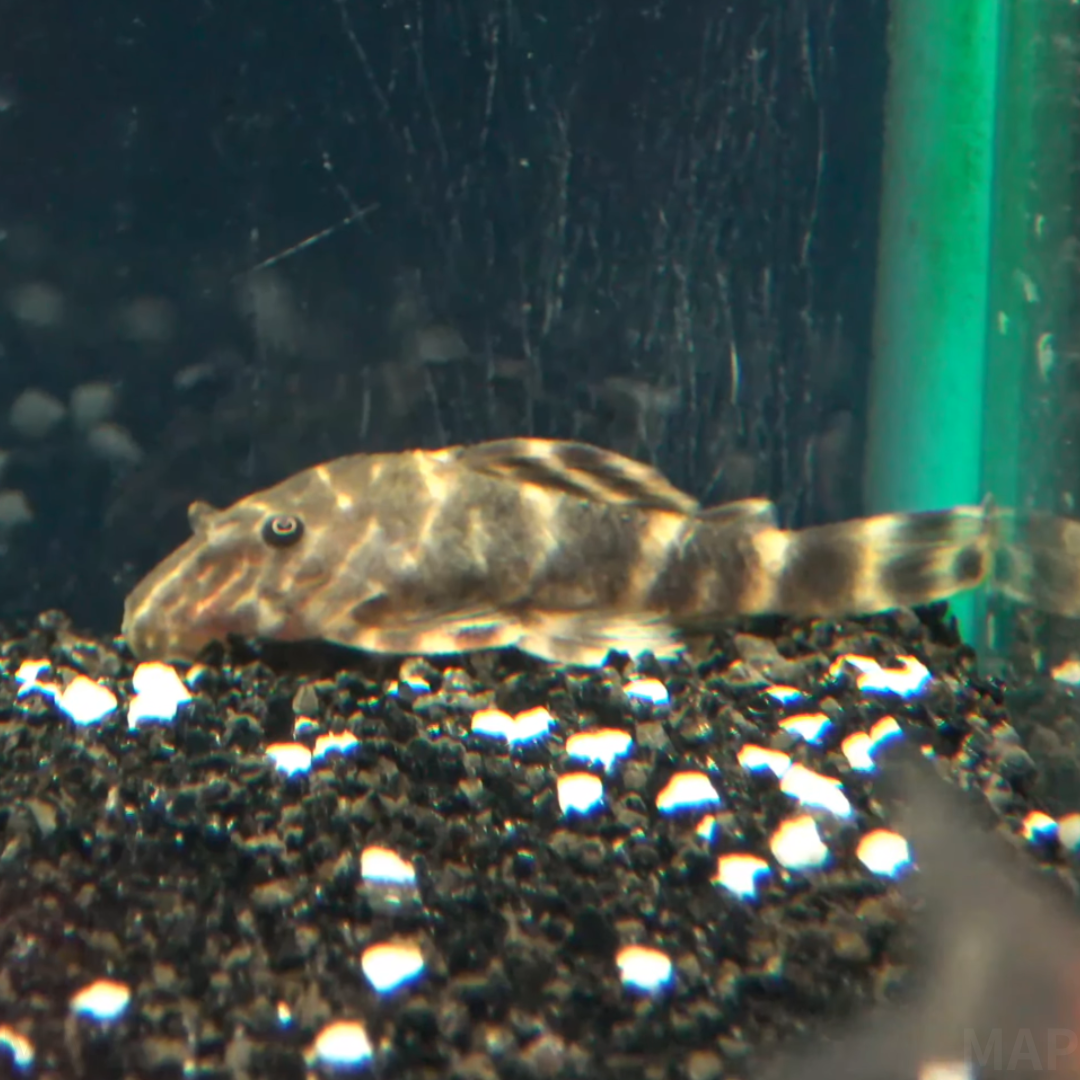




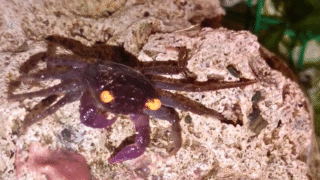
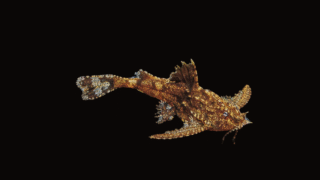
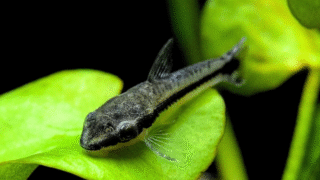
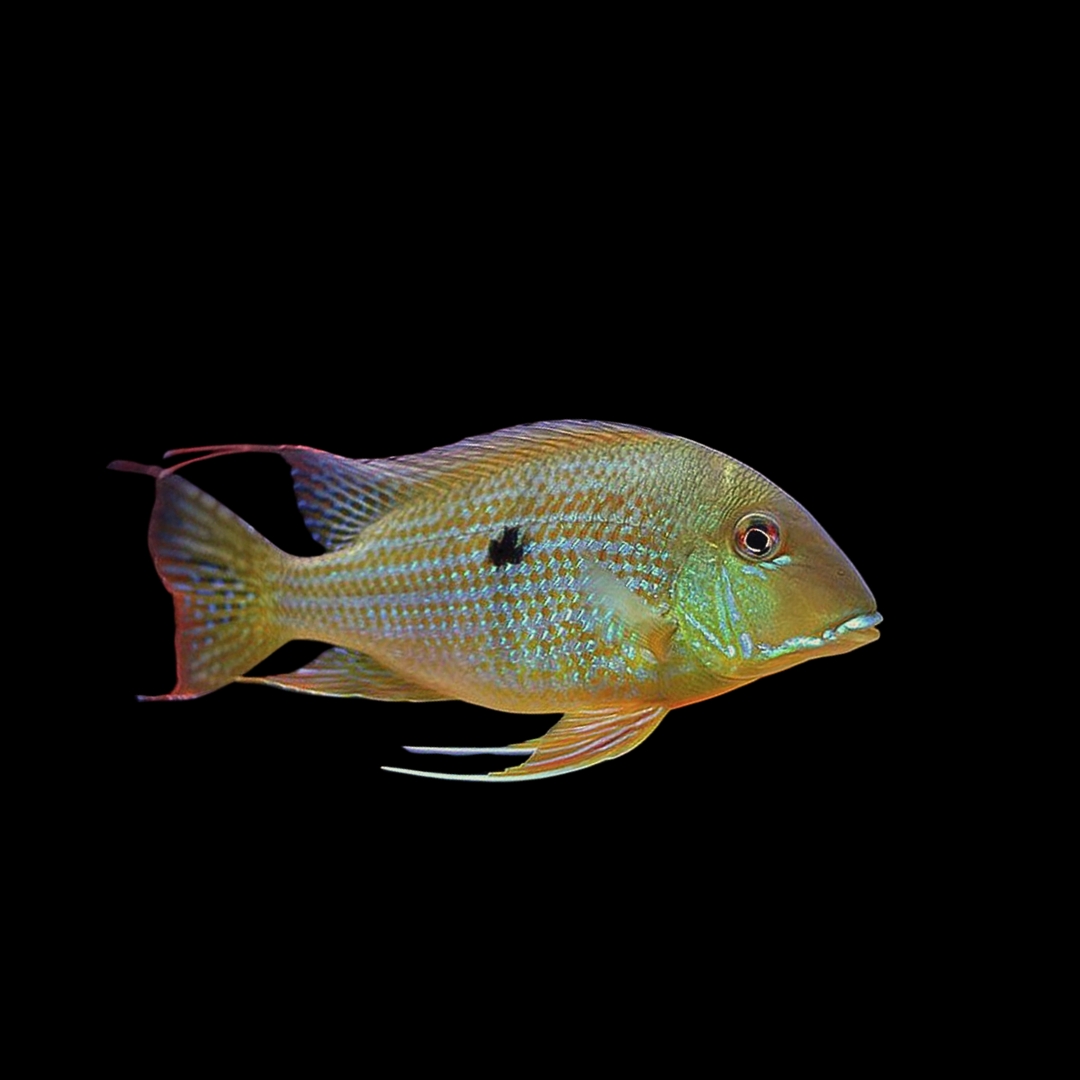
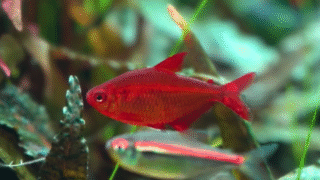
コメント